Warm-Season Veggie Grow List
Okiedawn OK Zone 7
9 years ago
Featured Answer
Sort by:Oldest
Comments (12)
johnnycoleman
9 years agolast modified: 9 years agochickencoupe
9 years agolast modified: 9 years agoRelated Discussions
Fall 2012 Veggie Grow List
Comments (13)Y'all, I hate the heat and it has slowed down the fall garden a lot for sure. I am just so ready to be able to go outside in cooler weather and spend the whole day out there if I want to. The stuff I still have in seed packets in the house isn't going to grow until it is planted, is it? It isn't going to get planted until the soil cools. Our high temps this week have ranged from 101 to 106 and our heat index has been even worse, so the soil sure hasn't cooled down a lot yet and I have only gone outside for very limited times in early morning and in the evening. Hopefully the cold front that should make it this far south late this evening or early tomorrow will give us enough of a cool-down that the soil temps will drop some more and quickly at that. Larry, I have big plans for the fall garden, and even to me, my own list seems too ambitious if I look at it all at once. Luckily, it doesn't all go into the ground all at once or I'd never manage to get it done on time. Due to the nature of the plants, some were planted many weeks ago and some aren't planted yet. I can manage a big garden in lots of small spurts of activity, squeezed into whatever cool hours we have. Lately I just wave at my plants as I walk down to the mail box and back, and I promise I'll stop in and see them when it cools down. All along I intended to keep whatever summer plants were still producing (except for most of the tomato plants since I had so many) and whatever had survived the grasshoppers and blister beetles and I intended for sure to plant October beans, southern peas, summer squash and broccoli. Everything else was "iffy" depending on if it ever rained again. I ordered the seeds, though, so certainly hoped I could use them this fall instead of next spring. Being this far south and often having high temps in the 100s occasionally through the end of September, I never get to put greens in the ground very early so normally the fall garden gets planted in July/August for the warm season stuff and then late August/early September for the cool-season stuff, and often I don't get the fall greens into the ground until early October. So far, that's about the same planting track I am on right now, except I'd hoped all summer for an early cool-down so I could be ahead of my own planting schedule for once. That didn't happen. For whatever reason, the grasshoppers are still munching away on the plants that remain from spring and summer, and especially on the tomato plants (the blister beetles are helping them eat tomato plants) but haven't touched the fall plantings of southern peas and green beans. That sort of adds to my feeling that insects are more prone to attack stressed plants and leave healthier plants alone. It isn't that the heat isn't stressing the beans and southern peas, but just that they are younger, healthier and better able to handle the stress. I did keep row covers on them for a while, but the row covers have been off the southern peas for a couple of weeks now and off the green beans beginning about 3 or 4 days ago. So far, nothing has nibbled on them. The 3+" of rain that fell a couple of weeks ago saved my fall garden plans. For a while there, after I planted the southern peas and green beans, I thought that might be all I'd do for fall. Then the rain came along and perked up both the garden and the gardener, and I added fall cukes and squash, and started seeds in cups of a lot of the cool season stuff that can be grown from transplants, like the kale and lettuce. Now I'm just waiting for the weather to become more cooperative. With cooler temps, I hope to get the root crops seedied into the beds in the next few days, and I do mean "few" because our VFD's annual fundraiser is next week so I'll be spending some time on that as well. I have to wait until the soil temps drop low enough for good germination though, so you can bet I'll be out with the thermometer checking the soil temps daily. Carol, After that 3" of rain fell, our heat index just soared. I would use our own readings from our thermometers and barometer and plug them into the HPC's online Heat Index Calculator. For a few days we had a heat index between 112-116 but it has been lower the last couple of days as the insane heat has sucked up some of that moisture from the ground. I hope you get more rain and if it will cooperate and fall in lower temps then maybe your heat index won't get so high. Kim, I haven't planted salsify this late in years, but since our overall weather pattern is hotter than it used to be, I think it has a good chance. Last winter was so hot that the only really cold spell I remember was the first week in December when it was very cold for the downtown Marietta Christmas parade. We thought that was the beginning of winter, but looking back, that was just about the beginning and the end of winter weather all in the same week. Of course, since I am planting salsify and counting on fairly warm ground through at least the end of December, we'll probably have an early winter and a long, cold one just to make me crazy. That's okay. If fall salsify doesn't work, I'll plant it again in spring. Most of the more ususual seeds I get, I cannot find locally and I order them so I can have the specific varieties I want to grow. All you really can find in the stores here is the same-old-same-old hybrids with a few heirlooms and open-pollinated varieties, and I don't necessarily want to grow the standard varieties. I like a lot of the open-pollinated and heirloom varieties bred with flavor in mind rather than earliness or uniformity or shelf life. With a lot of my fall plantings, I had seeds left from summer, but for the Wild Garden seed mixes and some of the kale and root crops, I ordered from Southern Exposure Seed Exchange and Bountiful Gardens. The "Wild Garden" mixes are not actually wild plants, they are just mixes of anything/everything from the breeding program at Wild Garden Farms. A few things I choose are season-specific. For example, for Spinach I choose some varieties that do better in fall and winter than in spring. In spring, we often go from 'too cold' to 'too hot' in about two days and sometimes spinach doesn't get to gtow for very long before the heat sets in, so I choose varieties that make smaller plants that mature faster. With a long, mild autumn I can grow some varieties of spinach that get larger, but which also have later DTMS and would likely be hit too hard by the spring heat. Sometimes it is a very subtle difference but it does matter. Winter Bloomsdale Spinach withstands cold and winter moisture a little differently than Bloomsdale Longstanding, which is why I choose it for fall, for example. Last year I planted a forage mixture for the deer and rabbits since there were so few native plants alive after the long hot summer and the wildlife was so starved, and it included turnips and collards that never froze all winter long, so this year I thought I'd plant more of them for us. It is not a bad wildfire year at my end of the state, and that is what determines how much of a fall garden I have most years. If the fires are bad in late summer and fall, I am too busy to plant a fall garden. Since the fires here haven't been too bad since late July, I have time for a fall garden. I just try to work with whatever the weather and real life allow me to do. Our "normal" wildfire season actually is in the winter months, but not much has been normal the last couple of yeas. Back in June and July when I was canning like a maniac, every day I hoped I could have just "one more day" without fires so I could get a bit more canning done. It used to be the fires only interfered with spring planting time, but lately they are a problem at different points year-round. Last summer, between the drought and the almost-daily wildfires I didn't can anything all summer long. This year, I canned day after day after day. I'm hoping for a quiet autumn, fire-wise, so I can work in the fall garden day after day in the same way. Ezzirah, I think it was wise to choose cool-season stuff. Now, if only the cool weather will arrive and cooperate with us. After suffering through these last two hot summers, I am determined to have a good fall garden. Having to hang out so much inside to avoid the heat all summer long for two summers has driven me crazy, because I'd much rather be in the garden. I've mostly dabbled in fall gardening in the past without getting overly serious about it, and a lot of that has been because of us being busy with fire department stuff in the fall, but there's been some major schedule changes to routine fall VFD fundraisers and community activities, so I ought to have more time free for the fall garden. Yay! I'd be remiss if I didn't add this last part for anyone considering a fall garden. Without a way to protect your plantings from wildlife, you have to share the plantings with them. Because I am surrounded by plentiful wildlife, my big garden has an 8' tall garden fence around it. Without that fence, I wouldn't even attempt a fall and winter garden because the wild animals would get it all. Even now, I have deer that come and nibble anything that I grow on the fence, but I don't mild sharing that little bit with them since they can't reach anything else, and they are hungry too. Dawn...See MoreCool Season Grow List
Comments (34)Bon, Home-made seed tapes work just fine. You can find instructions all over the internet. Just be sure you let them dry thoroughly before you put them up to await the day you plant them. If you put them up wet, the flour/water paste can turn moldy. You can use newsprint (not the glossy inserts), paper towels cut in strips, toilet paper, etc. Rodney, It is nice to have you visit us from the land of ice and snow. I hope our endless conversations about the early arrival of warm weather (it arrives every week, stays a few days, and then turns cold again) doesn't make you too crazy. Spring may arrive early here sometimes, especially compared to how late it arrives there for you, but then the cold nights keeps coming back and coming back and coming back. I'll had the temperature go down to freezing when tomato plants were knee-high to waist-high and covered in fruit. Last year, we harvested our first tomatoes on the last day of April (from plants protected on cold nights with frost blanket type row covers), sliced up that tomato, made BLTs and enjoyed every bite. That night or maybe the next night, we had our last freezing temperature of the year. By then, I had tomato plants that were 4' tall and loaded with fruit. C'mon now, is that normal? Nope, but we have to deal with whatever wild, crazy ride the OK weather brings us in any given year. So, while we talk of planting early, we also have to protect plants relatively late. What a terrific grow list you have! I would have thought you'd have idea conditions for the brassicas and for potatoes. Even here, potatoes do well most years, but if we fail to harvest them in time, the heat and humidity can make them collapse into a soggy, rotted mess some years (not necessarily all). Bon, I agree with Rodney. To my taste buds, garlic tastes like garlic. I like it all and never have had any I haven't liked. Today's weather-related surprise (Rodney, you should skip this little announcement of mine if you love asparagus and if the thought of us harvesting it now is going to make you crazy): this afternoon, while working in the garden, in 70-something-degree heat, I harvested the first asparagus spear. I washed it off, pinched off the tip that had been in the ground, broke it in half, and Tim and I stood there and ate that tender, yummy taste of spring. We both were shocked. I am pretty sure we've never harvested asparagus in early February before. I'm not even sure if we've ever had any to harvest in late February. March is more typical. This needs its own thread, and maybe it will get one later, but here goes. Today, at the Wal-Mart in Gainesville, TX, across the Red River from us, they had all kinds of veggies. All kinds. Including tomato plants and a handful of pepper plants. It is far too early for tomato plants--even Gainesville's average last freeze date surely cannot be much earlier than mine (March 28th) and far, far, far too early for pepper plants. So, what's a gardener to do? Especially when their own tomato plants are just tiny sprouts? Yep, I did it. I bought one of each variety they had: Big Beef, Early Girl, Celebrity and Sweet 100. They were in small (maybe 3 or 4") round peat pots. I repotted them into gallon pots and they are sitting on a shelf in my mudroom. I was going to put them in the unheated greenhouse but we're headed for a low in the 30s tonight more than likely, and I had left the doors open all day until sunset so there was no build-up of heat to keep them warm. It is likely that the first tomato we harvest in April will come from one of these plants. I hope the folks at that store remember to cover up the plants this weekend when we're expected to get pretty close to freezing. And for anyone in my neck of the woods wondering if the Wal-Mart in Ardmore has any tomato plants in the store, they did not, as of yesterday. Usually Gainesville gets them at least a week or two before Ardmore does. Oh, and we had to go across the road to the Gainesville Home Depot to get something Tim needed. I made a beeline straight to the garden center and they had the exact same tomato plants and pepper plants that Wal-Mart had, as well as all the cold-season veggies and herbs and tons of flowers. After he found what he came for, he had to come drag me out of the garden center because I was going to stay out there with all those plants all day....See More2017 Warm Season Grow List
Comments (48)Kim, That sort of pre-investigation can be close to stalking and makes me uneasy. I think people should have a right to privacy, but in today's social media and media world, that privacy is almost impossible to maintain. It drives me stark raving mad when people post photos of their new lawn furniture or new, fancy TV or new vehicle all over social media and than are stunned when their new items are stolen just days later. Duh. Maybe they shouldn't post photos of their lovely new things to show them off. Criminals love using social media to find stuff worth stealing and everyone who uses social media needs to understand that! A person may know who their FB friends are, but that doesn't mean they know who all the friends of their friends are. Melissa, You've seen my grow lists. Clearly I fail at figuring out what not to grow, so I just grow it all. It is funny. When I pick green beans, for example, there might be green beans in the bucket or basket I use while gathering the harvest, but there's also purple, yellow, pink and bicolored bean pods most years. It used to drive one of my old farmer neighbors insane. He'd rant and rave about it and ask me "why don't you grow the right things", meaning only red tomatoes, only yellow corn, only green beans, etc. He was very much a traditionalist and really wasn't my favorite person, but I always tried to be kind and respectful anyhow. Now, get everything cleaned up and start those seeds. I'm already at the point where the light shelves are getting full enough that soon I'll be moving plants to the greenhouse. It is kinda early, but I started early, so now I just have to keep moving plants out so I can start more. My parents never locked their doors either. After a female classmate of my sister's from high school was murdered (I think it was the year after they graduated from high school) in her rental home a couple of blocks away from my parents house in the mid-1980s, my parents finally began sort of half-heartedly locking their front door because we kids insisted they lock their doors. Half the time, though, they didn't lock the back door! I tried to explain over and over how this made no sense at all. They didn't get really good about locking their doors until at least the mid-90s. When we were shopping for land here around 1997, we stopped at the courthouse to look at an aerial photo they had on file of a land parcel we were looking at. I noticed that people would park at the courthouse in Marietta, leave their keys in their vehicles with the engine running and the doors unlocked. I was astonished! Of course, their vehicles were sitting right there when they came out of the courthouse. About the only thing they had to worry about was that if it was summertime, someone might leave a bag of squash or zucchini in the back seat of their vehicle. Nowadays, folks don't leave their vehicles running in town like that any more. Also back to gardening, my list involves growing plants. Lots and lots of plants. And, on a non-gardening note, RIP to Mary Tyler Moore. In my mind, she'll always be young and tossing her cap into the air just like she did at the beginning of her show. Dawn...See MoreWarm Season Grow List for 2018
Comments (13)Jack, Your list is nice and be careful or you'll fall into my trap of planting more garden than you can maintain/defend against wildlife and pests. Believe me, cutting this grow list is absolutely, positively the hardest thing I've ever done garden-wise. I am not exaggerating when I say how very painful it was and is. It has caused tossing and turning and sleepless nights, lying awake wondering how I will "survive" without 50 varieties of tomatoes, remembering the great experimental years when I grew 300 tomato varieties (600 plants) in one year in an effort to see how they did in head-to-head competition. (This was only possible because deer hadn't found our garden yet as many of these plants were outside the fenced garden itself. It also was, ironically, the year the deer found the garden, naturally, and started eating tomato plants.) Ever since we moved here, my gardening motto has kinda been "go big or go home". However, there's just the two of us now and we can eat only so much produce. Of course a person always can give away the excess, but if you raise lots of excess produce, you even put lots of time into growing, harvesting it, washing it, sorting it and bagging it up just to give away. I want to spend that time more productively on projects here at home. Even when I can, freeze and dehydrate all the excess for us, all I'm doing is filling up pantries and freezers with more food than we can eat. If you keep preserving more food than you can eat every year, after a while you have quite a surplus in storage. I work hard to rotate the oldest stored canned and frozen goods so that the oldest stuff is eaten first and the newest stuff last, but that's also a ton of work that involves keeping the deep freezes (we have 3 of them) really, really well-organized. I've been working really hard the last few years to more closely align what we preserve with how much we eat, though I still like to preserve two years of food each year---so if there is a total garden failure in any give year (it's never happened, but you never know) then there's still a year's worth of yummy home-grown food stored away. So, it is time to cut back even more. I have to have the mindset that what I grow and preserve this year will be enough for us, but not too much, and I cannot focus on the stuff I'm not able to grow. That opens up the door to have more space for flowers. I used to grow a lot more flowers than I have in recent years, but the veggies kept pushing them out. This year, it is a return to many more flowers. True pumpkins have zero chance of surviving here with all the squash vine borers---we always have two generations of them and sometimes 3 or 4. I'm just so tired of fighting them. I'm thinking that if I take off a year or two, maybe the SVBs will die out in my neighborhood. Before they found us, I grew 15-30 varieties of true pumpkins every year and had such a wonderful time doing it (and not even in the real garden, but out in the 10' wide strip of grass between our driveway and the southern property line....with me having to go drag wayward vines out of the driveway occasionally and direct their growth back towards the fenceline), but then the SVBs arrived, and everything changed. I think the SVBs didn't find us until our 7th year here. I do not know a single person in my county who grows true pumpkins (or summer squash) organically without the use of synthetic pesticides. I suppose I could just make life easy on myself by planting those true pumpkins and summer squash in their own garden away from the other two gardens and then spray them regularly with synthetic pesticides, and we'd have a great non-organic harvest of them, right? But, I find it nearly impossible to even contemplate doing that. I'd rather not ever use a synthetic pesticide even if it means giving up pumpkins. Oh, and my whole no-pumpkin plan is somewhat in danger because Lillie mentioned she loves pumpkins and have I ever grown the blue ones? I told her yes and the pink ones too, so of course, she's hoping I'll find a place to grow them. I need to have my head examined for even discussing pumpkins with that sweet child. I'm toying with the ideal of building a high tunnel, maybe 10' x 12', back in the back garden and covering it with Biothrips Proteknetting instead of plastic, and planting blue and pink pumpkins inside it for Lillie but I'm not going to tell her about that idea until the high tunnel gets built (if it gets built). Even then, we still have the vole issue so could go to all the trouble to try to exclude squash pest and still have voles eat the plant roots and kill the plants. We couldn't grow many pumpkins in a space that small, but for her, even 1 or 2 plants of the blue and the pink would be better than nothing. Sweet potatoes? I know I don't have them on my list. Every now and then I skip growing them because of space issues. What usually happens when I 'think' I am skipping them for one year is that I walk into Mike's Garden Center one day in May and see the 4 or 6 or 8 varieties of slips that they have, and then I impulsively buy some slips and find a way to shoehorn them into the garden. Last year I grew them in a regular bed, not one lined with hardware cloth, and I got away with it and the voles didn't eat them. That's a rarity. Maybe I'll find a spot to try that again this year because my hardware-cloth lined beds already will have taters, carrots and other things in them. The problem with all root crops is that we have billions, possibly trillions of pine voles living in our woodland. Usually they stay there until it gets hot and dry and food starts getting scarce--so generally early July. When that happens, they flock to the garden and eat every living thing that has some sort of fleshy tuber or root underground (or at/slightly above grade level)---sweet potatoes, Irish potatoes, onions, leeks, the bulbing form of fennel, carrots, radishes, turnips, beets, tulips (but not daffodils), dahlias, lilies, daylilies, ornmental sweet potatoes and virtually every other flower that has any sort of bulb or tuber for a root except I don't remember them ever eating glads. After they devour all that stuff, they start in on the root systems of fruit trees (and sometimes non-fruiting trees) and black berries. Still hungry? They start eating the roots of cucumbers, southern peas, watermelons and pumpkins. Honestly, sometimes it is a wonder that we are able to grow anything at all and get a harvest before the voles kill the plants. Other years the voles stay out of the garden. You never know what kind of year it is going to be. I have three small raised beds completely lined in hardware cloth where I can grow root crops, but there's never enough room in those beds for everything---so it means I have to make hard choices. This year I choose carrots over sweet potatoes, but there's always a chance that I'll be able to squeeze in a late sweet potato planting to succeed the carrots. So, cool-season root crops usually get to mature before voles show up but I plant them in hardware cloth-lined beds because some years the voles show up at planting time (maybe in a hard winter?) and eat all the seed potatoes as soon as I plant them if they aren't in the hardware cloth-lined bed. Warm-season root crops have a lot more vole trouble because the voles get hungrier in the summer once the heat decimates their usual food supply. In the worst drought years, the voles even have devoured the roots of lantana, moss rose and zinnias. They also love herbs, especially (for whatever reason) lemon balm. They've never bothered garlic or asparagus though. And, yes, I've tried all the castor oil based repellents and I think all they do is make the voles reproduce more babies more quickly. I've tried growing a border of castor bean plants along the garden fenceline---from the way some of those seeds 'moved' after they were sown, I think the voles dug up the beans I had planted and carried them around and moved them into new spots before they sprouted----and we still had voles destroy the garden plants anyway. If I were starting over with a brand new garden here, knowing what I know now about the voles, and if money were no object, I would have poured gravel 6" deep (or even poured concrete) over the entire garden plot, and then built raised beds on top of the gravel/concrete with each and every bed fully lined in hardware cloth. The problem with hardware cloth is that eventually it rusts and corrodes and needs to be replaced when it is used underground in the garden. I'm dreading the day when that happens to just the three small beds lined with it because it will involve moving a ton of dirt to replace the hardware cloth and we're getting older and less fond of heavy digging every year. And, yes, the voles do tunnel through the gravel driveway sometimes, just to show me they can, but I still think a gravel-based garden would have less vole trouble. So, root crops are limited by necessity. The kinds of flowers, fruit and berries I grow are limited by whatever the voles' appetites are in any given year. I'll never plant a fruit tree again without burying a hardware cloth root cage around the root system to at least give the tree a chance to make enough roots to survive the voles in its early years. I believe the voles are one reason we have so many snakes come into the garden. The cats control field mice and rats pretty well. Pumpkin does his best to control the voles, but there's so many of them that he gets tired of playing with them and gives up by mid-summer. The older cats just ignore the voles with a "been there, done that" attitude. Bobcats got into the garden almost daily and controlled the voles (though at the time, I did not realize that's why they were there because the voles hadn't become a garden problem yet since the bobcats were controlling them) when the garden had only a 4' tall fence. When we raised the fence to 8' to exclude the deer, it also excluded the bobcats. So, my choice appears to be a garden with a 4' fence and no voles and with bobcats but with tons of deer damage, or a garden with an 8' fence, no bobcats and no deer damage, but tons of vole damage. What's a gardener to do? So, those are the challenges I face, and that's the reason certain veggies (and many kinds of flowers) fall off the grow list. I love where we live. I expected wildlife. I might not have expected as much wildlife as we have though. With the Red River to our west, south and east, and tons of Wildlife Management Land along the river, we have such huge numbers of wildlife that sometimes it can be mind-boggling. In drought years it almost becomes dangerous here as the wildlife gets hungry and more aggressive---you do not, for example, want to encounter a bunch of hungry feral hogs ever. Even the deer have stalked me at times because they are hungry, and sometimes they will stand outside the garden fence and blow air through their nostrils trying to scare me out of the garden, or will stand outside the fence, stare at me and stomp their feet trying to scare me out of my own garden. I always, always, always must be mindful to close the garden gate behind me when I enter the garden and to securely latch the gate closed----it isn't fun to have even a little skunk come wandering into the fenced garden while you're in there...and that is why my garden has two gates! Truthfully, when the deer are that aggressive, I'd rather go into the house, but that means leaving the safety of the enclosed garden and walking about 100' in an open area with the deer right there....so I yell back at the deer, tell them to go away, throw things at them, etc. and after they leave, I go indoors. We won't even get into talk of the cougar year when the sudden appearance of cougars at my garden gate in mid- to late- summer caused me to start carrying a long gun instead of just a hand gun out to the garden with me....and for weeks I was so scared that I hardly went into the garden for any reason except to harvest and then I'd take two big dogs with me. Big dogs trample gardens, so I was sort of choosing the lesser of two evils at that point. Personally, I'm more in favor of gun-free gardening, but not willing to move back to the city to make it a reality. : ) As more people move here to our rural area slowly over the years (near us, but usually not between us and the river), it just seems to push more wildlife towards us, especially if they clearcut the woodland areas on their property. More wildlife is just more trouble for me and my garden. If I ever build a new garden spot, we will either build a deck of pressure-treated lumber or pour a huge concrete slab and then I'll have an Earthbox garden right outside the back door with a hard surface beneath it that might keep the garden vole-free and snake-free. That's my dream retirement garden, but we'd have to fence the side yard to make it happen....and Tim hates fencing. Still, I expect I'll get my way and have this retirement garden built after he retires in a few more years. Okay, my rant about what I can and can't do is over. Everything I've learned I cannot do here because of the wildlife absolutely was learned the hard way by having wildlife destroy what I planted over and over again, so I've learned to focus instead on what I can do. That means that some root crops don't make the list in any given year and many forms of flowers that have tuberous or bulbous roots are off the grow list permanently. Some years I get so tired of fighting squash bugs even on regular squash and C. moschata types of winter squash that I swear I am never, ever again going to plant squash but then I plant it anyway. One of these days, I'll skip all squash for a year and y'all will think I've completely lost my mind. It's okay. I don't expect anyone who has never had these sorts of garden challenges to understand that a gardener can only fight that war so many times on so many fronts before they decide that gardening shouldn't be a war and just give up on that particular crop. Dawn...See Moreluvncannin
9 years agolast modified: 9 years agoluvncannin
9 years agolast modified: 9 years agochickencoupe
9 years agolast modified: 9 years agoAmyinOwasso/zone 6b
9 years agolast modified: 9 years agoOkiedawn OK Zone 7
9 years agolast modified: 9 years agoluvncannin
9 years agolast modified: 9 years agoluvncannin
9 years agolast modified: 9 years agojohnnycoleman
9 years agolast modified: 9 years agoAmyinOwasso/zone 6b
9 years agolast modified: 9 years ago
Related Stories
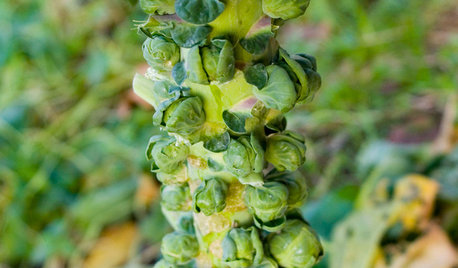
COOL-SEASON CROPSCool-Season Vegetables: How to Grow Brussels Sprouts
If you love 'em (you know who you are), fall and spring are the right times for planting these veggies in your edible garden
Full Story0
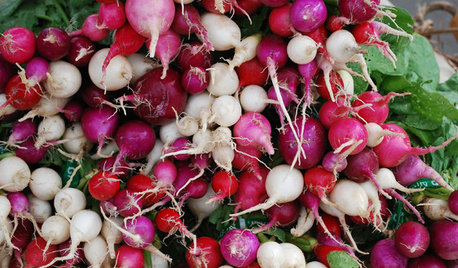
COOL-SEASON CROPSCool-Season Vegetables: How to Grow Radishes
Fast growing and bright, these easy-care veggies are great for kids and bring plentiful color to a fall or spring garden
Full Story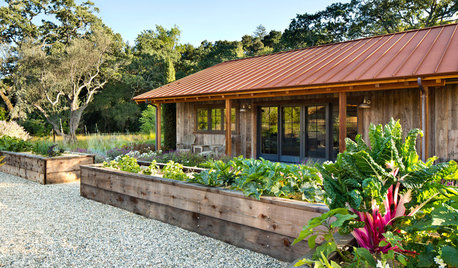
EDIBLE GARDENSHow to Grow Your Own Sweet Summer Crops
This guide will help any gardener get started on growing the freshest warm-season veggies and berries for summer
Full Story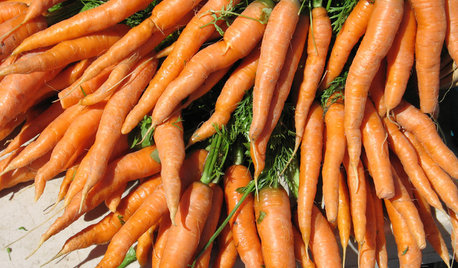
COOL-SEASON CROPSCool-Season Vegetables: How to Grow Carrots
More than just a bunny food, easy-to-grow carrots add lacy good looks to a fall or spring garden
Full Story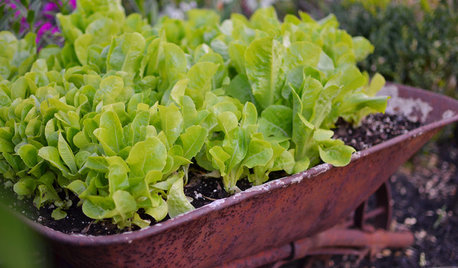
FARM YOUR YARD10 Easy Edibles to Grow in Containers
These herbs, vegetables and fruits are just as happy in a pot as they are in the ground
Full Story
COOL-SEASON CROPSCool-Season Vegetables: How to Grow Potatoes
This ever-popular tuber is a stalwart in spring and fall gardens and a staple in kitchens everywhere
Full Story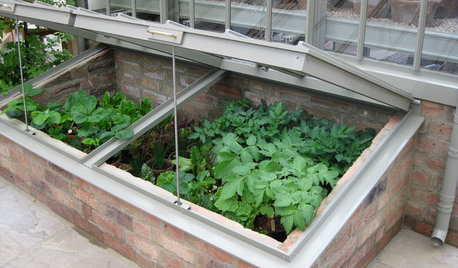
WINTER GARDENINGExtend Your Growing Season With a Cold Frame in the Garden
If the sun's shining, it might be time to sow seeds under glass to transplant or harvest
Full Story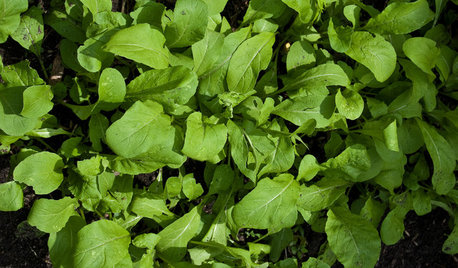
COOL-SEASON CROPSCool-Season Vegetables: How to Grow Salad Greens
From arugula to radicchio, greens have taken a top spot on the table and in fall and winter gardens. See how to start growing them now
Full Story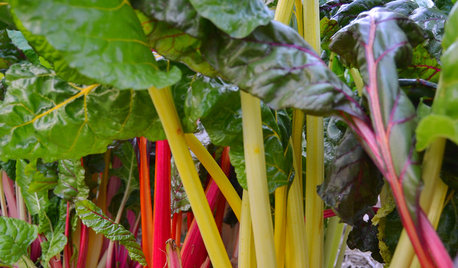
GARDENING GUIDESCool-Season Vegetables: How to Grow Chard
A year-round garden favorite with a colorful stem, Swiss chard comes into its own in early spring and in fall
Full Story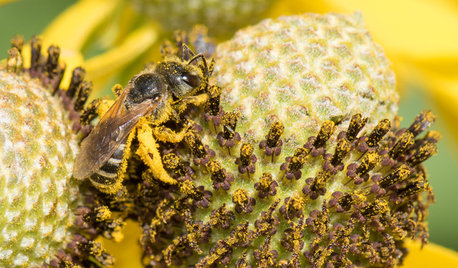
GARDENING GUIDESWelcome Sweat Bees to Your Garden Throughout the Growing Season
Look before you swat! These friendly sweat bees will feed on your sweat on a hot summer day, but their main buffet is flowers
Full Story


luvncannin